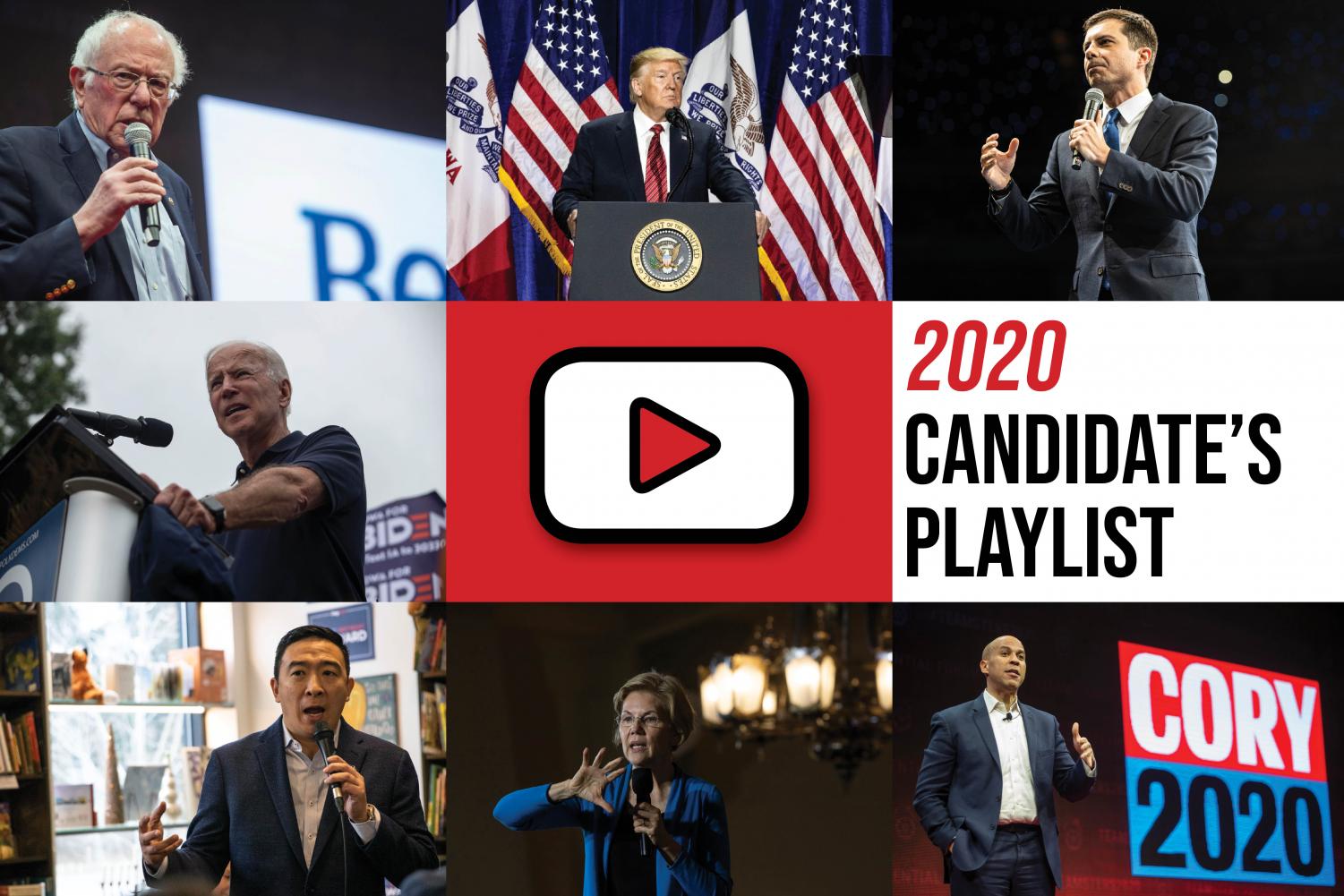Presidential candidate walk-on songs make for a boppin’ playlist
December 15, 2019
The crowds of Iowans who attend political rallies are familiar with long waits, shifting from foot to tired foot and bouncing slightly to the background music while wishing they brought a snack.
These crowds are also familiar with the stillness just before a candidate’s “walk-on” song plays.
A podium stands alone next to the Old Capitol Building as the flag atop of the gold dome ripples gently.
Cars slow near Gilbert Street to see why a crowd has gathered on a Monday, but no one honks. Instead, curious heads swivel to catch a glimpse of the platform.
An American flag hovers over an empty stage near the IMU as the sun sets over the Iowa River. The sky, full of purple and pink, creates dramatic lighting for a scene already filled with anticipation.
Suddenly, the music starts.
The crowd comes alive, waving signs and cheering. It is as though a switch has been thrown. This song is the signal the crowd has been waiting for: the person they have watched on TV and waited to see for hours is about to appear. As speakers blare, children, students, and adults clap until their hands sting and shout until their throats burn.
Bernie Sanders takes his place behind the podium. Pete Buttigieg steps onto a raised platform. Elizabeth Warren climbs the stairs and takes the microphone. All of them wave, all of them smile, and all of them blast the song they’ve chosen as their anthem.
In response to 2020 Iowa Democratic caucuses, each candidate has spent her or his fair share of time in Iowa. Candidate John Delaney even visited every single county in the state, so it’s not an exaggeration to think of Iowa as the political “belle of the ball.”
These rallies are accompanied by a brand-building tool that each candidate uses to their advantage: a campaign playlist and “walk-on” song.
Timothy Hagle, UI professor of political science, said the music entertains people during long waits, matches the atmosphere of an event, and helps maintain a candidate’s brand through types of artists, genres, and lyrics.
“[Candidate’s music] can be reactionary or it can build messages and ideas …” Hagle said. “Trump uses ‘You Can’t Always Get What You Want’ by the Rolling Stones. It seems like more of a response to people who don’t like him, like he’s trolling them.”
Listen: ‘You Can’t Always Get What You Want’ by the Rolling Stone
As candidates come and go in Iowa, it’s important to look at the messages they value in music. Unlike understanding policy and tuning into debates, music is accessible and understandable to all, no matter political experience.
“[Music choice] reflects the candidate as a decision maker: their choices, what they’re deciding to emphasize about themselves as candidates, who they’re trying to reach,” Mathew Swiatlowski, Professor of American Studies, said. “All these things matter. Culture matters.”
Here is the list of seven candidates’ walk-on songs for your listening and politically analytical pleasure.

Contributed
Joe Biden, Former Vice President: “We Take Care of Our Own” by Bruce Springsteen
Joe Biden and rock music have one thing in common: they both appeal to the masses. Swiatlowski said this song sounds like a rally. The beginning is upbeat and slightly chaotic, and then Springsteen’s well-known voice swoops in to deliver the message.
Listen: “We Take Care of Our Own” by Bruce Springsteen
As the front-runner, Biden needs to hold on to his lead by connecting to his moderate base and highlighting all the work he has done in public office over his many years of service. “We Take Care of Our Own” is a nod to his dedication to the American public.
Swiatlowski said through this song, Biden is espousing social ethics of the Democratic party while remaining nationalistic. This is clearly seen in the chorus and title of the song.
“We take care of our own
Wherever this flag is flown”
If this upbeat rock song sounds familiar, it’s because President Barack Obama used “We Take Care of Our Own” during his campaign and DNC speech during his 2012 election.
Watch: President Obama’s DNC speech
Biden’s reuse of the song can acknowledge his work as Obama’s Vice President and desire to return to the policies and values of the Obama administration. However, it could come across as Biden gaining votes because of Obama’s popularity, not his own.
According to FiveThirtyEight, an early December poll has Biden in first place with 23% of likely voters.
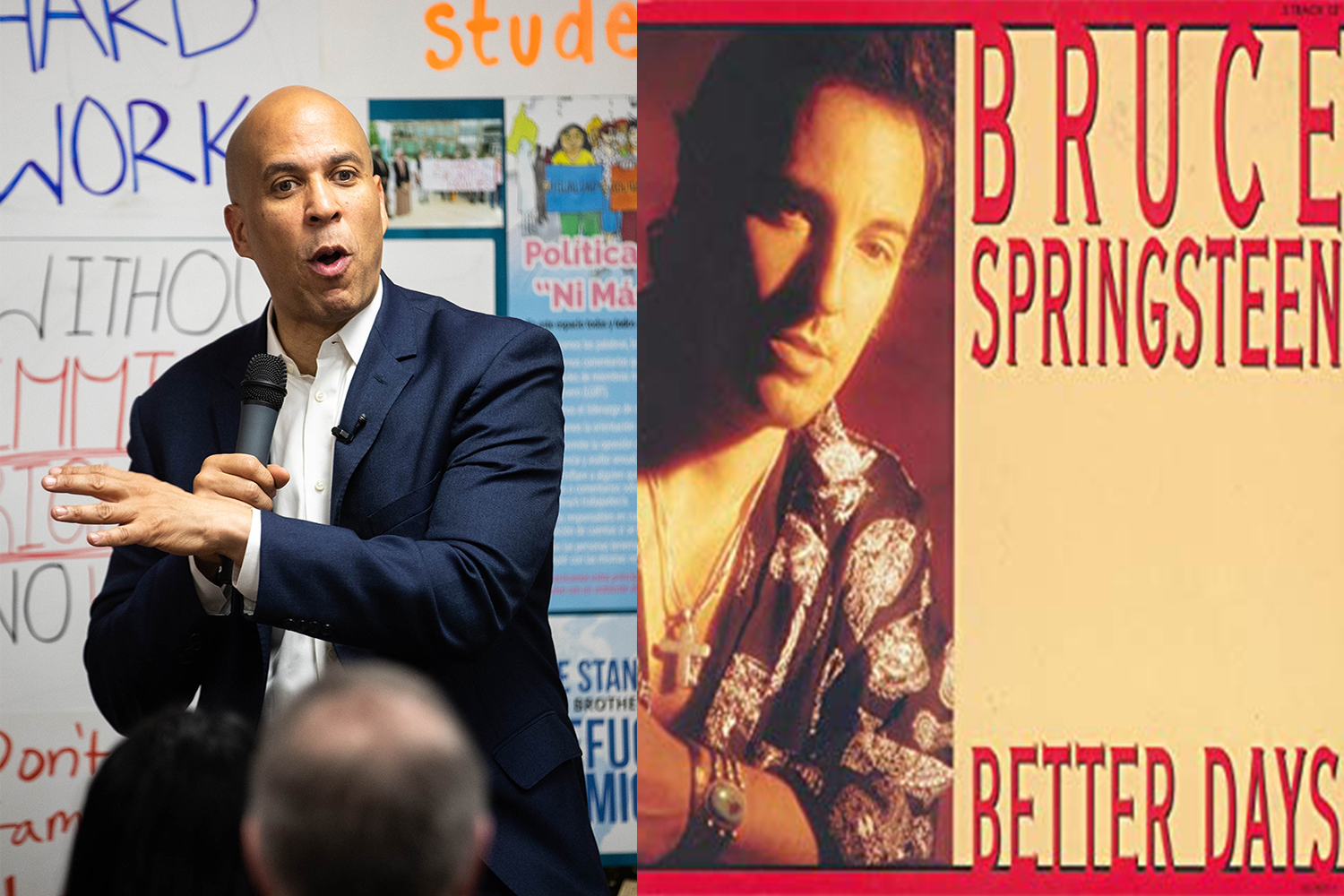
Contributed
Cory Booker, Senator from New Jersey: “Better Days” by Bruce Springsteen
The pull towards Bruce Springsteen is understandable, considering the guy made an album called ‘Born in the U.S.A’. on which the cover was tight blue jeans and an American flag. As Swiatlowski said, it’s somewhat on the nose.
Listen: “Better Days” by Bruce Springsteen
Plus both the rock star’s home state is New Jersey, so choosing Springsteen is a nod to the state that elected him to Senate.
Candidates often choose Springsteen for this iconic image, even if his lyrics to the song don’t align with the campaign’s values and goals. For example, Ronald Reagan used the song “Born in the U.S.A.” in his 1984 re-election campaign, even though the song’s narrative is blatantly anti-Vietnam war and criticizes America.
Watch: Ronald Reagan using the song “Born in the U.S.A.” in his 1984 campaign
While the song “Better Days” shares the ultimate message of hope, it also discusses the current state of political disarray. Swiatlowski said this could reference Hillary Clinton’s loss to Donald Trump in 2016.
“Well my soul checked out missing as I sat listening
To the hours and minutes tickin’ away
Yeah just sittin’ around waitin’ for my life to begin
While it was all just slippin’ away”
Instead of fighting for hope against external adversity, Booker makes the important distinction of fighting for hope against our own complacency.
Swiatlowski said even if this is Booker’s intention, it is ultimately the chorus that people hear. When Reagan used “Born in the U.S.A.,” his crowds didn’t notice the very critical verses. So what do Booker fans hear?
“Better days
Better days are coming”
Booker is in sixth place with 4% of likely voters.
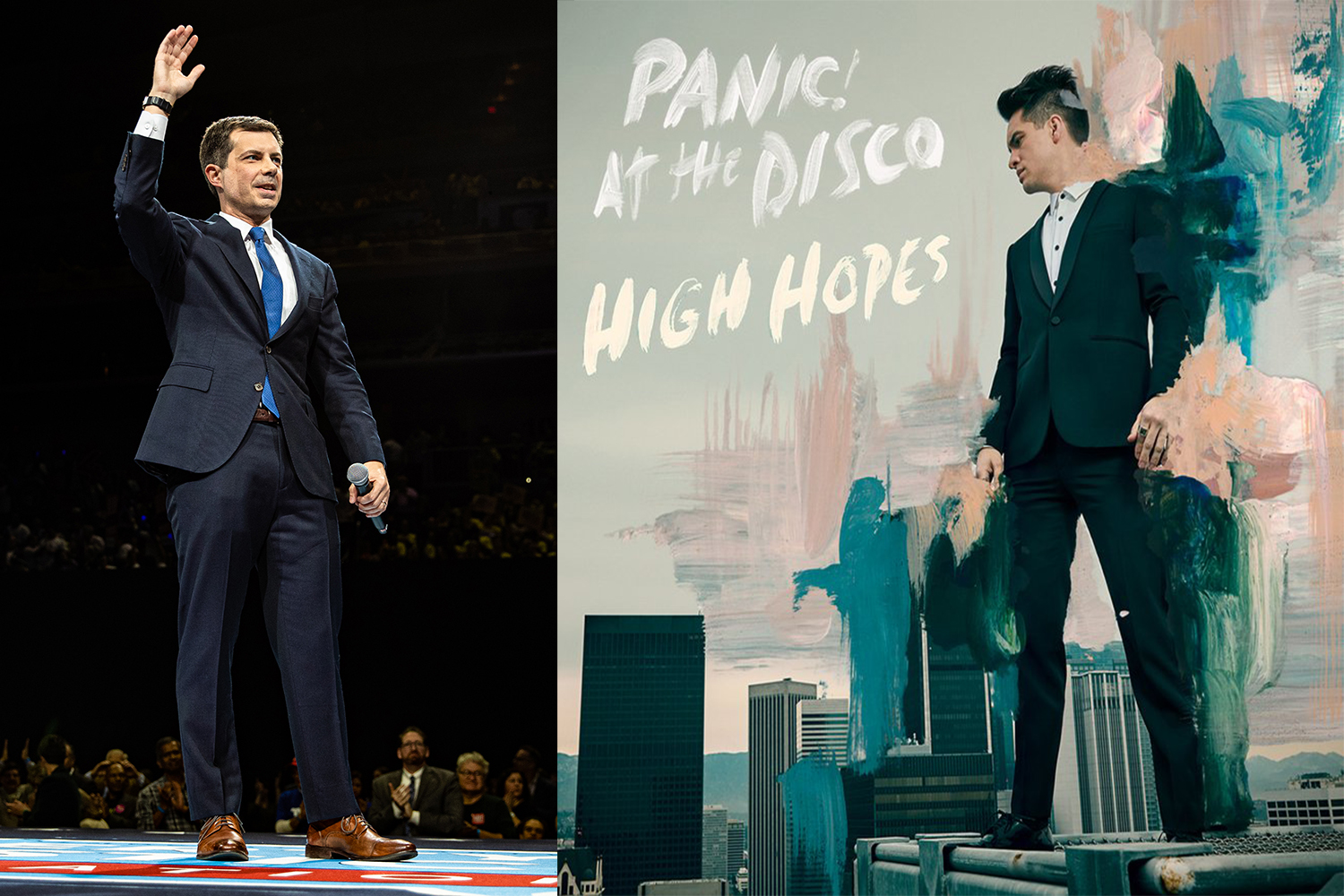
Contributed
Pete Buttigieg, South Bend, Indiana Mayor: “High Hopes” by Panic! At the Disco
Eight arm pumps to each corner. Eight wrist rolls to each corner. Eight claps to each corner. Finally, jump up and down while waving arms from side to side in the air.
This is not a workout routine. This is the dance created by supporters of Buttigieg, a choreographed bop which has since gone viral. The dance is easy to learn and perform, so it caught on among Buttigieg supporters and captures ideals of youth and energy.
#HighHopes for #TeamPete could this team be any more incredible?! @PeteForAmerica pic.twitter.com/60XUluKnfS
— Meg Hovious (@mrhovious) September 21, 2019
Some call the dance cringey — the hosts of Saturday Night Live’s Weekend Update joked that it was part of the method Buttigieg was using to garner a “negative percentage of the black vote.”
“Any sort of in-crowd thing can be repellent to people who are not in the in-crowd,” Swiatlowski said. “…I would think your opinion of Buttigieg as a candidate would certainly influence whether or not you found that dance to be corny or unifying.”
At age 37, Buttigieg is the youngest candidate in the field. Using this to his advantage, Buttigieg uses a very high-energy walk-on song by Panic! At the Disco, an American pop rock band from 2004 that tends to have a younger following.
The message of “High Hopes” appeals to young Iowans who are trying to accomplish goals, find a level of security and contentment, and find their political voices in a confusing and complicated political climate. The song advocates for working and prevailing despite adversity.
Swiatlowski said the message about hope also echoes values from the Obama campaign, which makes sense as Buttigieg markets himself as a new version of Obama.
“High Hopes” does have a downside because it acknowledges Buttigieg’s inexperience. Unlike many of his other candidates, Buttigieg has never worked in national politics. His youth is a double-edged sword, and his music choice shows this well.
Buttigieg is in third place with 18% of likely voters.

Contributed
Bernie Sanders, Independent Senator from Vermont: “Power to the People” by John Lennon
There are few things in this world that conjure the same feeling of hearing the opening note of a gospel choir. It comes as a wall of sound, with dozens of voices simultaneously hitting notes low and high. It’s a beautiful, organized cacophony.
Listen: “Power to the People” by John Lennon
This united front of different sounds is the perfect way to introduce Sanders, whose choice of “Power to the People” by John Lennon is so on brand it hurts.
“It’s unlike Biden’s campaign … [Sanders] is not running a national campaign, he’s running more of a democratic or socialist campaign,” Swiatlowski said. “It empowers the people without really mentioning which people.”
The song advocates for taking action and working for radical change, which Sanders himself has done his entire political career. His campaign, which is famously grassroots-based, is funded mostly by donations from average Americans instead of corporations and big donors, so the song is also a nod to those who gave him the power and platform to run for president.
The song even directly references one of Sanders’ policies: raising the minimum wage.
“A million workers working for nothing
You better give ’em what they really own”
In addition to the lyrics, the song is uplifting and upbeat. It maintains a steady and pounding drum beat. People tend to know this song, or at least know John Lennon. The song is repetitive, which works in terms of getting crowds excited.
Sanders is in second place with 22% of likely voters.
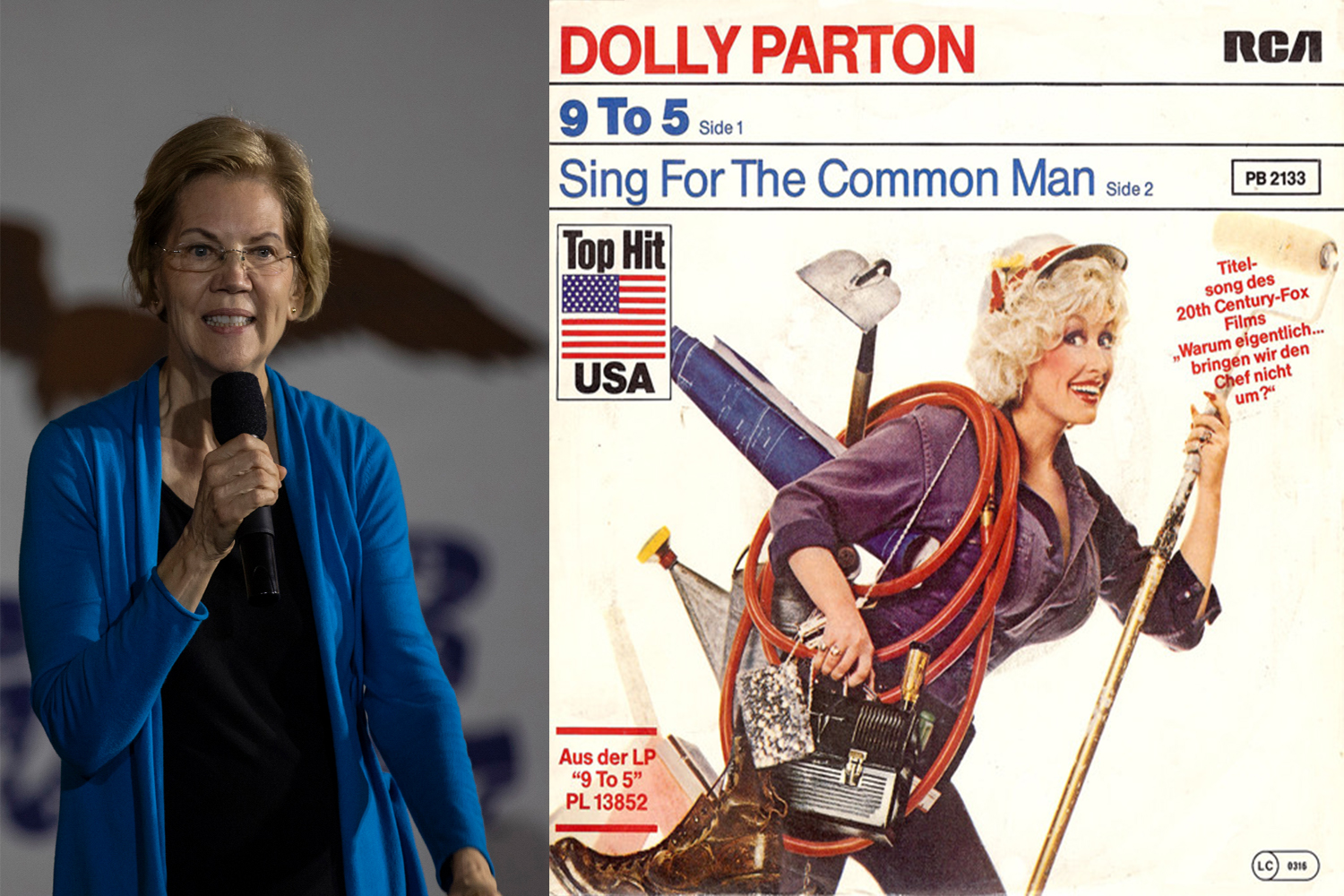
Contributed
Elizabeth Warren, Senator from Massachusetts: “Nine to Five” by Dolly Parton
Most of Warren’s campaign is geared towards the average working American. She came from a middle-class family who had to work hard to get by, so it makes sense that Warren’s song is “Nine to Five” by Dolly Parton.
Watch: “Nine to Five” by Dolly Parton
The upbeat song with the pounding piano backbone is the perfect anthem for a champion of the working class. The chorus speaks for itself:
“Workin’ 9 to 5, what a way to make a livin’
Barely gettin’ by, it’s all takin’ and no givin’
They just use your mind and they never give you credit
It’s enough to drive you crazy if you let it”
Swiatlowski said the use of country is also a nod to Warren’s background in Oklahoma and Texas even though she’s a senator for Massachusetts.
Pause and picture this: Jane Fonda, Lily Tomlin, and Dolly Parton as ‘80s secretaries, in their shoulder-padded glory, taking down a sexist and tyrannical boss. It can be a dramatic leap from the story of a hard-working American, but the ideas have one thing in common: Dolly Parton.
When Parton starred in the 1980 film “Nine to Five,” she wrote the film’s main song “Nine to Five.” Even though the movie is an iconic and hilarious feminist film, the song, which Warren uses, doesn’t specifically talk about women in the working world.
There have been zero successful presidential campaigns by women, so it’s still a mystery as to how to use gender in a campaign. Ignore it? Use it? Who knows.
As Swiatlowski said, Warren uses the feminst anthem in a way that doesn’t threaten male fragility. Warren’s walk-on song isn’t feminist on a surface level, but once paired with the movie, it praises women who succeed despite higher standards. It’s like sneaky feminism; it speaks to all of her values while not calling attention to her gender.
Warren is in fourth place with 12% of likely voters.
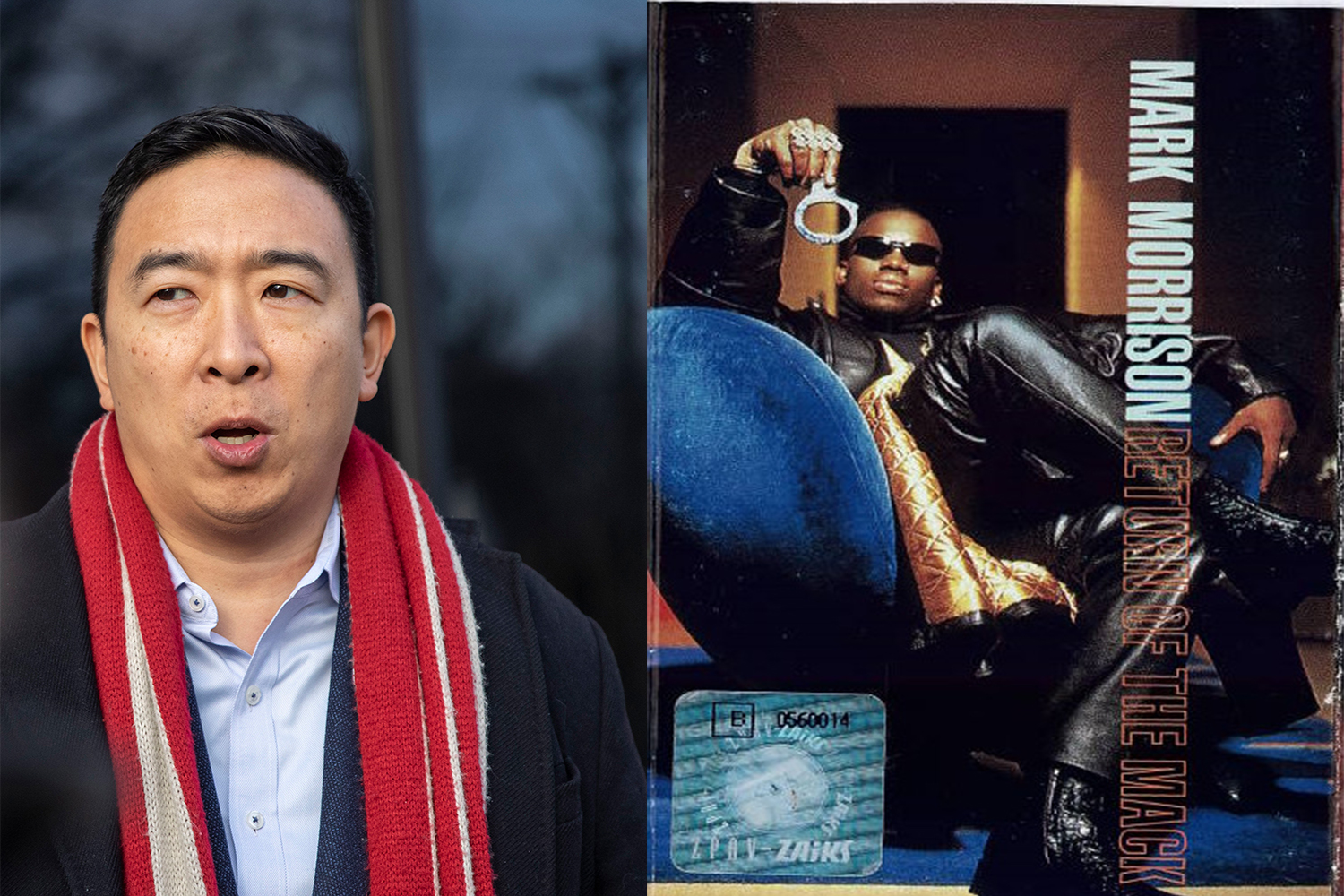
Contributed
Andrew Yang, Entrepreneur: “Return of the Mack” by Mark Morrison
Record scratch. Freeze frame. When Yang takes the stage, the song that accompanies him is unlike any other walk-on song. Yang bypassed the typical Springsteen route and instead went with “Return of the Mack.”
Listen: “Return of the Mack” by Mark Morrison
Sensual tones burst from keyboards, synthesizers, and British R&B singer Mack Morrision in a confusing, but not unwelcome anthem.
“Return of the Mack” is a good song. Even if someone doesn’t like it, it’s hard to resist nodding their head along with the beat. It makes no sense, and that’s why it makes sense.
Yang is wildly different from his fellow candidates. He doesn’t come from a political background, rather business and tech. His policies, such as the Freedom Dividend (a universal basic income of $1,000 a month to every American adult), are unprecedented.
The Freedom Dividend is basically a handout, and handouts are taboo in government and politics, Swiatlowski said. Even Bernie Sanders advocates hard work, stressing that nobody who works a full-time job should live in poverty.
Yang markets this unique idea in an environment where nobody wants to hear it, which shows a level of confidence.
“My guess is that he just likes the song,” Swiatlowski said. “Otherwise, I don’t know how it would be the choice.”
There is a drawback to this song. Some don’t take Yang seriously as a candidate, and blasting the 1997 R&B jam doesn’t exactly increase his credit in this area.
Even for those who don’t take him seriously as a candidate, it’s easy to listen to Yang because he’s smart, has interesting ideas, and knows how to deliver them. That’s why “Return of the Mack” works for Yang, and Yang only.
Yang is tied for eighth place with 2% of likely voters.

Contributed
Donald Trump, President: “God Bless the U.S.A.” by Lee Greenwood
A Trump rally works a little bit like a rock concert. The music is loud, the fans are enthusiastic, and the star of the show is loving every bit of the chaos. It’s carefully designed this way.
Listen: “God Bless the U.S.A.” by Lee Greenwood
Swiatlowski remembers hearing “God Bless the U.S.A.” during his childhood at an airforce base. His mother and he would go to welcome back soldiers from the first Iraq war, and that’s the song that would play. It’s perfect for patriotic moments throughout time.
“God Bless the U.S.A.” is a classic, which is why Trump uses it as one of his several walk-on songs. Most people know the chorus and can sing along. The song itself builds, swelling to that final “U.S.A.” note. The message isn’t nuanced or hidden. The message is clear:
“’Cause there ain’t no doubt
I love this land
God Bless the U.S.A.”
All of Trump’s music fits his brand because Trump’s brand is, “I do what I want, no matter what.” Even when Trump’s music switches from “You Can’t Always Get What You Want” to “Memories” from the Broadway musical Cats, any song he plays is a statement, a claim. This is my song.
Listen: “You Can’t Always Get What You Want” to “Memories” from the Broadway musical Cats
Many artists have spoken against Trump, telling him to stop using their songs. For example, the Rolling Stones, Queen, Guns and Roses, and Rhianna. The list goes on. Where other candidates would back off the controversy, Trump continues to use the music within legal parameters. This act of defiance itself fits Trump’s campaign.
When Trump steps on to the stage, the crowd has been listening to loud rock music for an hour. Once the crowd sees him, people erupt in screaming, cheering, and singing. Trump smiles and he waves his arms like a conductor, watching his supporters scream back the lyrics.
Watch: Trump rally in Council Bluffs, Iowa
“God Bless the U.S.A”
